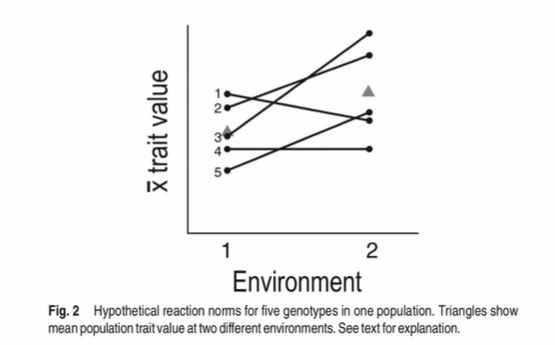EE LEC 1 - PHENOTYPIC PLASTICITY
1/28
There's no tags or description
Looks like no tags are added yet.
Name | Mastery | Learn | Test | Matching | Spaced |
|---|
No study sessions yet.
29 Terms
What is phenotypic plasticity?
The ability for a single genotype to produce different phenotypes when exposed to different environments
How do individuals respond to environmental change?
Behaviour
Physiology
Life-history
How do populations respond to environmental change?
Behaviour
Performance
Physiology
PP involves complex traits - what are they?
Common at high levels of biological organisation
Made of many subordinate traits
Capable of exhibiting emergent properties
Often modular
Affected by many genes and environmental factors
What are emergent properties?
Properties that become apparent and result from various interacting components within a system but are properties that do not belong to the individual components themselves
What is modularity?
Organisation of biological systems into discrete, self-contained units that perform specific functions
2 examples of complex traits in humans:
Brain
Eye
What is the selection hierarchy?
Refers to the idea that natural selection can act at different levels of biological organization, from genes to species and beyond
What are reaction norms?
The spectrum of phenotypic variation produced when individuals of the same genotype are exposed to varying environmental conditions

Genotype - individual level
The actual set of genes affecting the phenotype and shaping all aspects of the norm of reaction
Plasticity - individual level
An attribute of the individual reaction norm, indicating that the genotype generates different phenotypes depending on the external conditions
Genotype x Environment - individual level
The idea that genotypes and environments interact mechanistically throughout the development of an organism to produce its phenotype
What are the costs of plasticity?
Results in a decrease in fitness even when an optimal phenotype is expressed
What are the limits/constraints of plasticity?
Exist in the failure to express an optimal phenotype to begin with
What is the phenotypic plasticity cascade?
Something in the internal andor/external envrionment changes
Organism senses that change
Organism alters gene expression
Usually, the altered gene expression yields additional observable phenotypes
Phenotypic plasticity cascade - step 1
Changes in ambient temperature, humidity or oxygen concentration would constitute external environmental factors.
Phenotypic plasticity cascade - step 2
Some changes may occur without any formal sensing by the organism, e.g. as result of direct effects of temperature on the rates of ongoing physiological processes
Phenotypic plasticity cascade - step 3
Some plastic responses need to involve changes in gene expression but instead could occur via phosphorylation of existing proteins, changes in protein levels caused by variation in protein ubiquitination, or simulation of existing microRNAs
Phenotypic plasticity cascade - step 4
If changes occur at lower levels, higher-level traits might show no apparent change
Hierarchical masking effect
Compensatory plasticity at lower levels could lead to reduced plasticity at higher levels
What are the characteristics of PP?
Changes may or may not be reversible
Changes may or may not be adaptive
Behavioural plasticity (compensation) might shield lower-level traits from selection
At population level, phenotypic plasticity in behaviour and other traits can facilitate invasions of new habitats
When is non-adaptive plasticity expected?
When an organism is exposed to environmental conditions with which it is unfamiliar in terms of its evolutionary history
When should phenotyic plasticity evolve?
Intuitively:
Not in a constant environment
Not if variation in environmental factors are entirely unpredictable
Stress
Anything that threatens homeostasis, survival or other components of Darwinian fitness
Reversible phenotypic plasticity would be expected for all organisms if…
They are exposed to stress periods that last shorter than life span
Stress appears in the long run with some regularity so that natural selection can shape plastic traits
How to study evolution (PP)
Reciprocal transplant experiments
Common garden experiments
What is a reciprocal transplant experiment?
Ecological studies where organisms from different envrionments are moved to the other’s habitat, allowing researchers to compare the relative fitness of populations in their native versus alternative environment
What is a common garden experiment?
A research method where organisms from different populations or environments are raised together in a controlled, standardized environment to assess the influence of genetics and the environment on traits